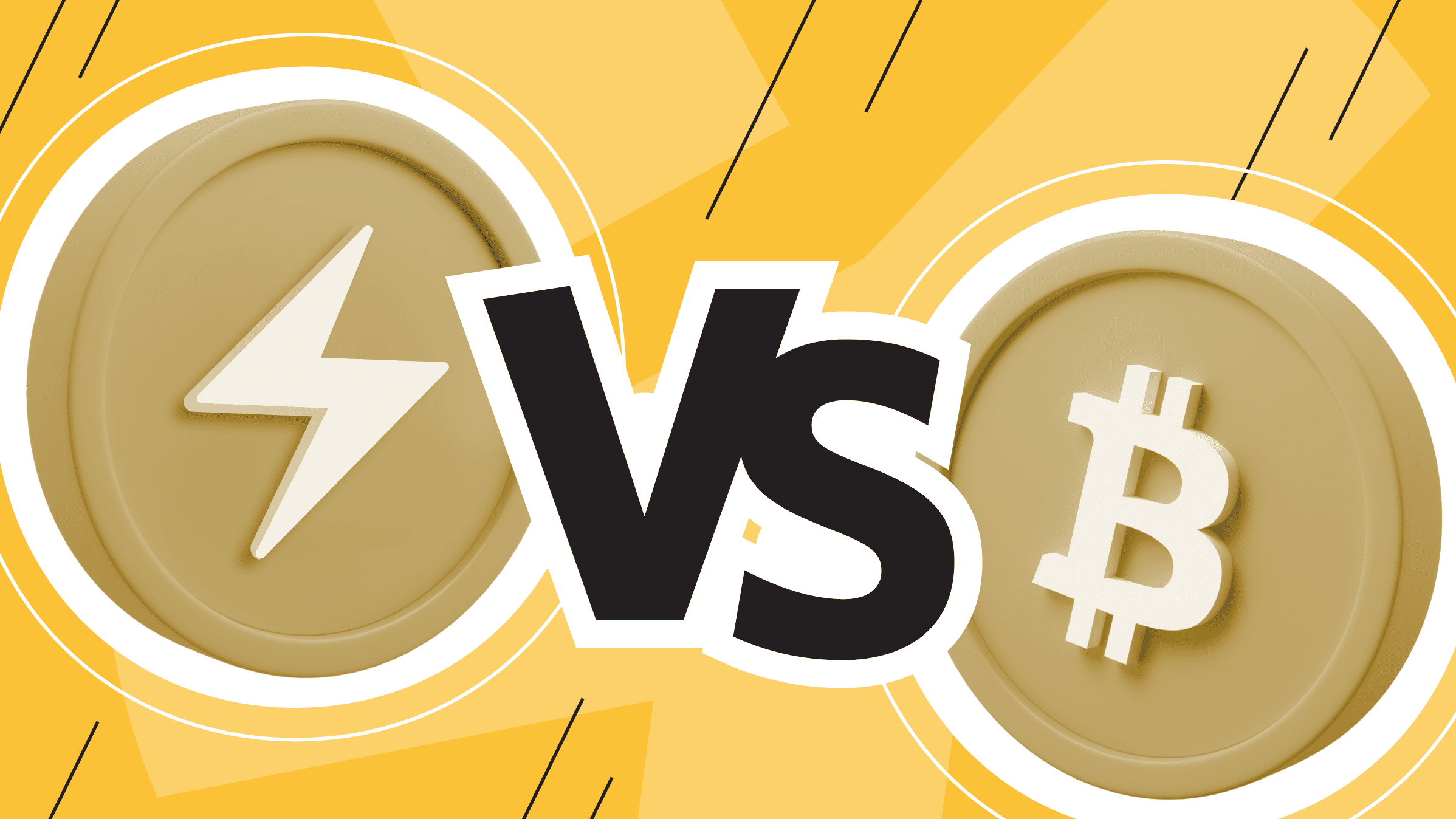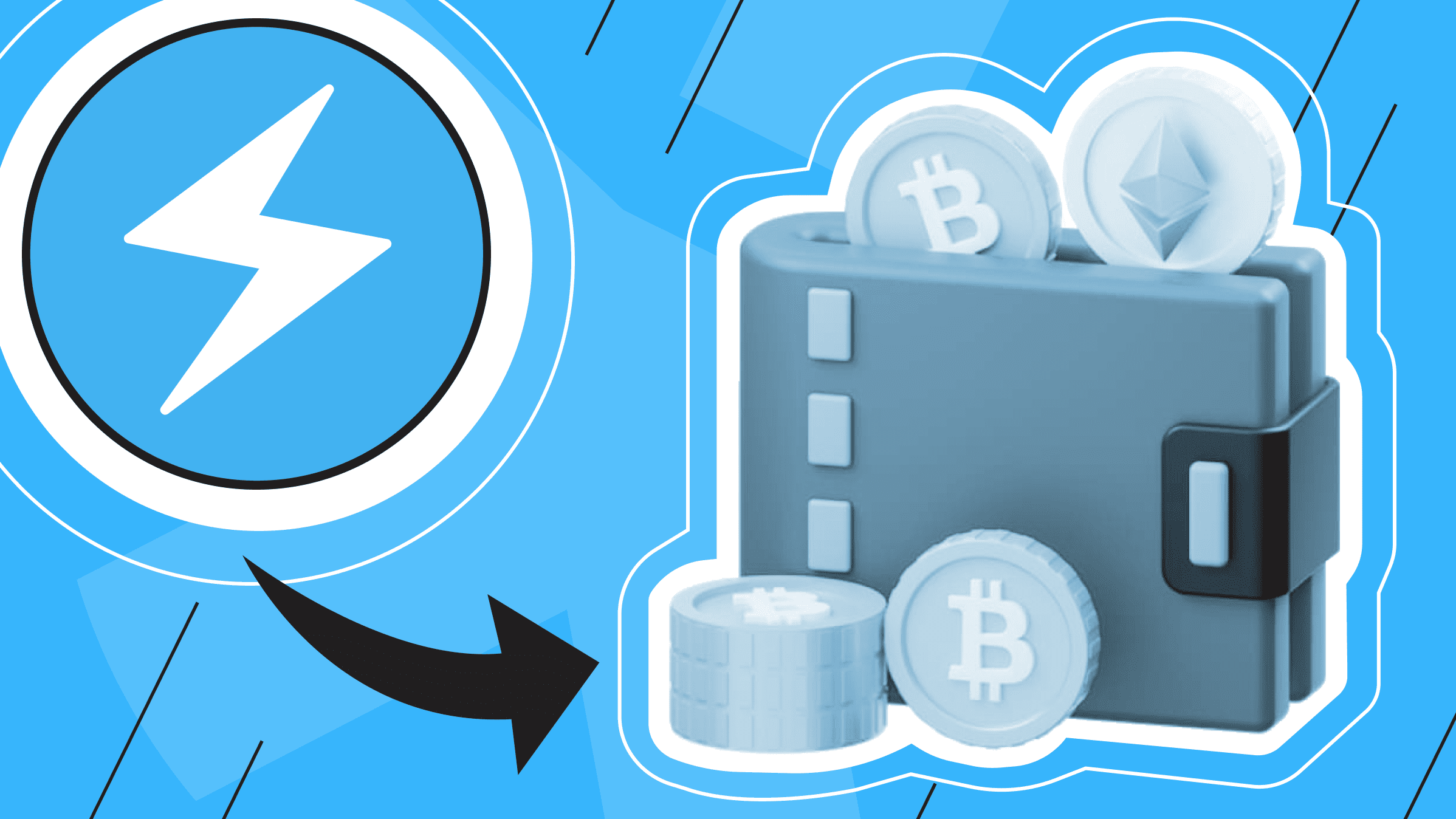
The Lightning Network is a Layer 2 payment protocol for Bitcoin designed to address scaling issues and lower transaction costs. It operates through a network of nodes that create channels for storing funds. These channels allow for quick and easy payments between users without waiting for blockchain confirmation.
While the Lightning Network is still relatively new, it has already shown promising results and significantly succeeded in making Bitcoin more scalable. What is the Lighting Network?
As the use of Bitcoin spreads, there is a growing demand for Lightning Network wallets. These wallets allow users to send and receive micropayments in Bitcoins through Lightning Network off-chain channels.
Essentially, Lightning wallets function like regular Bitcoin wallets but have the additional ability to open channels for LN payments. Some wallets require manual channel creation, while others automate the process for a more user-friendly experience. These wallets are designed to optimize the potential of the Lightning Network and offer users an efficient and seamless payment experience.
This article will take a closer look at the most popular Lighting Network wallets, their features, and their capabilities.
What Are Lightning Network Wallets?

A Lightning Wallet, also known as a Lightning Network wallet, is a specially designed type of digital wallet to participate in the Lightning Network. With it, users can receive and send bitcoins through the Lightning Network, which provides faster and cheaper transactions than traditional on-chain transactions. This is achieved by creating payment channels between participants that allow transactions to occur outside of the main blockchain network, thereby reducing the load on the Bitcoin blockchain. How does the Lightning Network work?
There are several types of Lightning wallets, each with its unique benefits and use cases to suit different user preferences and needs.
Custodial wallets are managed by third parties, such as cryptocurrency exchanges, which provides convenience but requires users to trust the security of the wallet provider.
Non-custodial wallets give users full control over their funds and private keys, prioritizing security and control.
Mobile wallets are designed for smartphones and tablets, and have an intuitive interface and the ability to scan QR codes to make convenient payments.
Desktop wallets are installed on personal computers or laptops, provide extensive features, and are suitable for advanced users.
Web wallets are accessed through web browsers, which provides flexibility but requires trust in the web application provider.
Hardware wallets are physical devices designed to maximize security, some with autonomous Lightning Network management integration and secure transaction signing.
Lightning Wallets Features
Lightning wallets have several key features that allow them to operate on the Lightning Network.
- Use of nodes: A Lightning node is required for wallets to operate on the Lightning Network. The Lightning node monitors the Bitcoin network to secure funds and facilitate transactions by communicating with other nodes. It monitors channel balances to ensure enough funds are available to make payments.
- Routing: One of the most important features of Lightning wallets is their ability to find and use payment routes on the Lightning Network. When a user initiates a payment, the wallet's routing algorithm dynamically determines the most efficient path through the network to reach the recipient. This considers factors such as bandwidth, tariffs, and node reliability to ensure successful and fast transactions.
- Channels: Lightning wallets use payment channels to enable fast and inexpensive transactions. Two parties can open a payment channel between their Lightning nodes if they want to conduct frequent transactions. This channel functions as a private off-chain channel, allowing multiple transactions to be sent and received without the involvement of the Bitcoin blockchain. The channel remains open until one party decides to close it, at which point the final balance is recorded on the Bitcoin blockchain.
- Invoicing: Lightning wallets support the creation and use of Lightning invoices. An invoice is a payment request the recipient generates that contains important information such as payment amount, expiration date, timestamped account ID, and description. The invoice is presented to the sender, who uses it to initiate the payment. The wallet then manages the payment routing to the recipient using the information in the invoice.
- Instant Transactions: Lightning wallets enable near-instant transactions on the Lightning Network. Because transactions are performed off-chain in payment channels, they do not require the confirmation time typical of Bitcoin blockchain transactions. This feature allows Lightning wallets to be used for micropayments and quick transactions with small amounts.
- Micropayments: Lightning wallets facilitate micropayments by allowing users to send and receive small amounts of Bitcoin with very low fees. This feature opens up new ways to use cryptocurrencies, such as paying for digital content, microservices, and in-game purchases.
- Low Transaction Fees: Lightning wallets offer significantly lower transaction fees than traditional transactions on the Bitcoin blockchain. Optimized payment channels and routing allow users to complete transactions with minimal fees, making Lightning wallets cost-effective for various transaction sizes.
Lightning Wallets Review
Wallet of Satoshi

Wallet of Satoshi is a mobile app for iOS and Android platforms designed to send and receive payments on the Lightning Network seamlessly. As a custodial wallet, it prioritizes simplicity and an exceptional user experience, as most of the technical complexities associated with Lightning Network transactions are handled for the user.
Features and Functionality
Wallet of Satoshi is optimized for Lightning Network payments, allowing users to send and receive Bitcoin payments. In addition to Bitcoin, the wallet supports the conversion of various cryptocurrencies, allowing users to manage multiple wallets and conveniently switch between different digital assets.
The Wallet of Satoshi takes privacy and security seriously. It uses advanced encryption technologies to protect users' funds and ensure a level of anonymity. Notably, the wallet does not require users to go through a KYC process, which means there is no need to provide personal information to use the wallet.
Unlike many other wallets, Wallet of Satoshi does not require the user to create an account. Instead, your device serves as your "username." You can continue using the wallet as long as you have the app or phone.
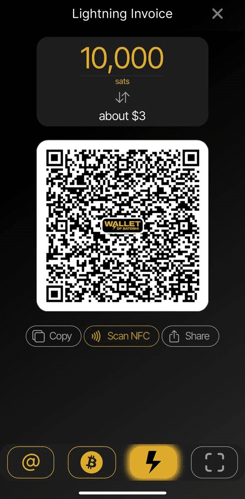
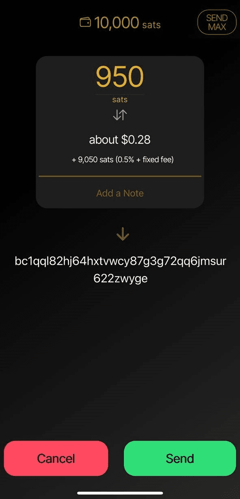
The wallet offers a convenient option to purchase Bitcoins directly within the app using the Moonpay service. This allows users to top up their wallets without leaving the app. Users can send Bitcoins from exchanges directly to the Wallet of Satoshi or buy them in the app. This feature simplifies the process of topping up the wallet for Lightning Network transactions.
The app includes a feature to search for merchants in your area that accept Lightning Network payments. This feature promotes the wider adoption of Lightning Network for everyday transactions.
Wallet of Satoshi features a minimalistic and intuitive interface. With this design choice, users, regardless of their technical knowledge, can easily navigate the app and enjoy a simple setup process.
The wallet works as a centralized storage facility. This means that while users benefit from not having to manage their private keys and the complexities of Lightning channel management, they also hand over full control of their Bitcoins to the service provider.
The wallet offers a Scan-to-Pay option that simplifies the process of making payments on the Lightning Network by allowing users to scan QR codes to initiate transactions.
Platform compatibility: Android and iOS
Pros
- Easy to use
- Intuitive interface
- Ability to purchase Bitcoin directly through the app
Cons
- Custodial wallet
- Limited control over funds, codes, and keys
Developer: Wallet of Satoshi
Official website: www.walletofsatoshi.com
Electrum
In 2011, Thomas Vogtlin created and launched the Electrum cryptocurrency wallet. It was one of the first cryptocurrency wallets allowing investors to store their digital assets on personal computers securely. Designed primarily for Bitcoin, Electrum introduced innovative features designed for Bitcoin investors. In particular, it implemented the Lightning Network, allowing users to conduct Bitcoin transactions instantly.
Features and Functionality
One of the distinctive features of Electrum is its integration with Lightning nodes. With this integration, users can both receive and send Lightning payments, opening up new opportunities for fast and efficient transactions. Electrum also allows users to open and manage their own channels. A minimum balance of 20,000 satoshis is required to start a channel.
Electrum simplifies the process with its invoice generation feature for those who want to receive payments. Invoices contain a payment hash and a convenient QR code. Electrum allows tracking balance on-chain and balance within channels, giving users a complete overview of their digital assets.
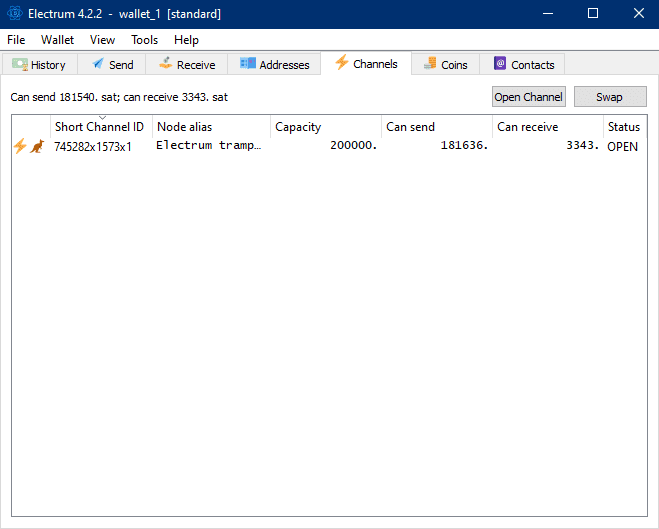
Electrum offers strong two-factor authentication for account access. Moreover, the web and mobile versions require a password for an additional layer of protection. One of the features of Electrum is that it does not store your coins or private keys. You are in complete control, which minimizes the risk of data leakage. KYC is not part of the registration process, which ensures privacy. The private key is accessed with an initial 12-word passphrase. Electrum also offers a watchtower feature that allows for channel monitoring. For those who prefer cold storage, Electrum supports offline coin storage and easily integrates with hardware wallets to increase the security of your assets. What is a cold wallet?
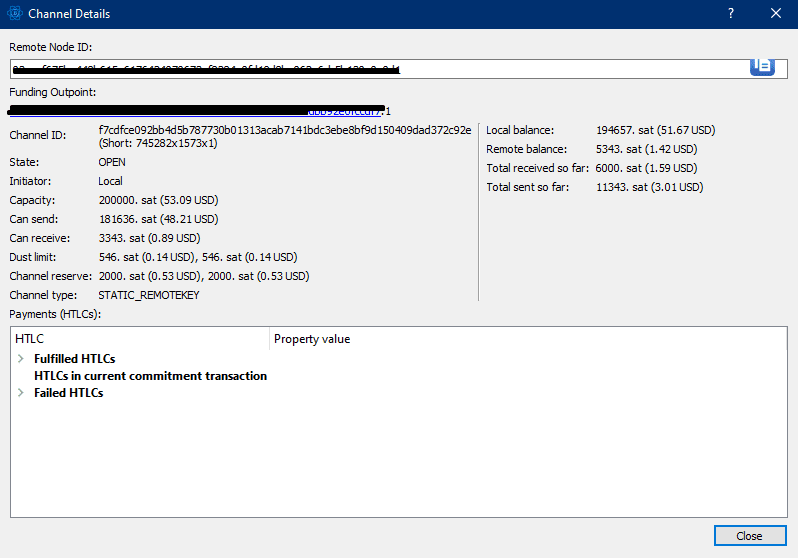
The ability to manually adjust fees in Electrum allows users to control the cost of transactions better. This feature is very important in a fast-paced cryptocurrency environment.
Platform compatibility: Windows, Linux, MacOS, Android
Pros
- Software functionality
- Open source code
- Two-factor authentication
Cons
- Security issues in the past
- Fairly difficult to use for new users
Developer: ThomasV and SomberNight
Official website: electrum.org
Breez Mobile

Breez Lightning Wallet is a mobile application specifically designed to utilize the Lightning Network. This open-source wallet is designed to provide a seamless and convenient user experience for Bitcoin transactions using the Lightning Network.
Features and Functionality
Breez focuses on Lightning Network transactions, which are known for their speed and low fees compared to traditional Bitcoin on-chain transactions. Breez automatically sets up and manages Lightning channels for its users, providing quick and easy access to Lightning Network features without requiring extensive technical knowledge. A unique feature of Breez is zero-conf channels, allowing users to use funds in a Lightning channel as soon as they are received without waiting for blockchain confirmations.
Breez is a non-custodial wallet, meaning users have full control over their private keys and funds, increasing security and financial sovereignty. The wallet performs complex tasks such as incoming liquidity management and routing, making sending and receiving Lightning payments easy.
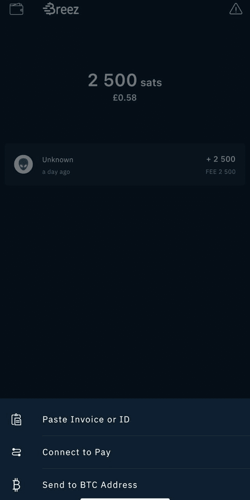
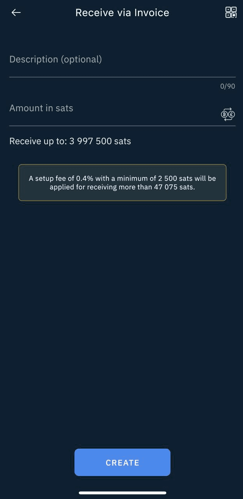
Breez supports on-chain transactions via Submarine Swaps, allowing funds to move seamlessly between the Lightning Network and the main Bitcoin blockchain. Breez also offers Point-of-Sale mode, which turns the wallet into a Lightning cash machine, allowing merchants to accept payments in Bitcoin via Lightning transactions. This feature is intended to encourage wider adoption of Bitcoin as a means of payment.
The wallet includes a next-generation podcast player that allows users to transfer sats (small fractions of Bitcoin) to content creators as they listen. This innovative integration combines entertainment and micropayments.
Breez focuses on security, utilizing features such as two-factor authentication and biometric login capabilities. Multi-signature technology is used to enhance the security of funds. The wallet can save backups to Google Drive; for added security, users can add a seed phrase for recovery.
Breez allows users to buy Bitcoins with credit or debit cards, which expands the possibilities of Bitcoin purchases.
Platform compatibility: Breeze is a mobile app for Android and iOS
Pros
- Speed
- Low fees
- User-friendly interface
- Innovative features
Cons
- Beta status
- Insufficient privacy
Developer: Breeze
Official website: breez.technology
Eclair
Eclair Lightning Wallet is a powerful and secure mobile application that allows users to efficiently send, receive and store their Bitcoin assets using the Lightning Network.
Features and Functionality
Eclair Wallet utilizes the Lightning Network, allowing users to make transactions almost instantly and with minimal risk of double spending. Eclair features a two-tier architecture that eliminates waiting for blockchain confirmations. This approach allows users to transact with Bitcoin quickly and efficiently, bypassing the delays and potential congestion associated with traditional on-chain transactions.
Users can create payment channels with other wallet users through the Lightning Network. The Eclair wallet prioritizes the security of users' funds. It offers encryption to protect sensitive data, data backup and recovery capabilities in case of device loss, two-factor authentication (2FA) for an additional layer of security, and compatibility with open-source hardware wallets to protect private keys.
Eclair features a modern and user-friendly interface for novice and advanced users. The intuitive design allows users to navigate the wallet's features easily, ensuring seamless Bitcoin funds management.
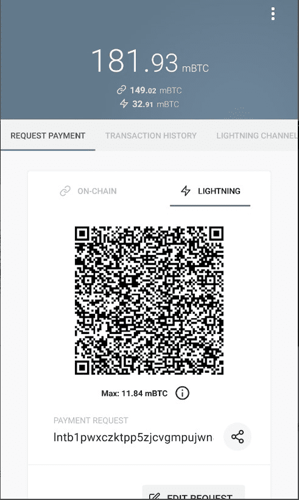
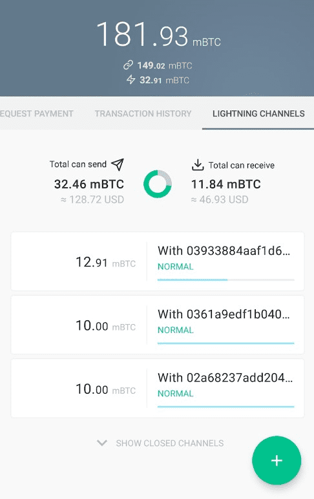
The wallet provides users with complete transaction information and payment history. Users can track their payments and monitor transaction details, ensuring transparency and accountability of their financial transactions.
Eclair supports advanced Lightning Network features such as multipath payments, which increases the versatility and functionality of the wallet for more advanced users. This capability allows for more complex and diverse payment routing.
Eclair is a non-custodial wallet allowing users to control their funds fully. A smaller version of the wallet's Lightning node runs directly on the user's mobile device, increasing security and decentralization.
Unlike wallets that calculate routes using third-party developers, with Eclair, this process happens within the user's device, minimizing potential privacy risks.
Users can customize transaction fees, tailoring them to their preferences and urgency.
Released in 2018, ACINQ's Eclair Lightning Wallet has built a strong reputation in the Bitcoin community. Its credibility stems from its open-source nature, robust security measures, integration with Lightning Network, and support for advanced Lightning Network features. Whether users need efficient microtransactions, fast fund transfers, or enhanced privacy, the Eclair wallet is a versatile and reliable solution for managing bitcoin assets on the go.
Platform compatibility: Android
Pros
- User-friendly interface
- Two-tier architecture
- Security
- Decentralization and privacy
- Advanced Lightning networking capabilities
- Cross-platform compatibility
Cons
- No desktop version
- Limited asset support
- Difficult to customize
- Eclair Mobile has gone End-Of-Life, so the developer recommends using Phoenix Wallet instead
Developer: ACINQ
Official site: https://github.com/ACINQ/eclair-mobile/tree/testnet
Phoenix

Phoenix is a universal cross-platform, open-source cryptocurrency wallet characterized by ease of use and reliable security. It supports a range of cryptocurrencies and is compatible with both mobile and desktop devices. Its key features include a user-friendly interface, strong wallet encryption, a built-in exchange for convenient cryptocurrency trading, and enhanced security measures.
Features and Functionality
Phoenix is a non-custodial Lightning Network wallet. It functions as a full-fledged Lightning node, allowing users to manage their LN channels and transactions easily.
One of Phoenix's standout features is its inbuilt exchange, allowing users to buy and sell cryptocurrencies within the wallet conveniently. This eliminates the need to switch between different platforms and simplifies the process.
Phoenix offers secure backup and recovery options, allowing users to access their funds even in the event of unforeseen circumstances.
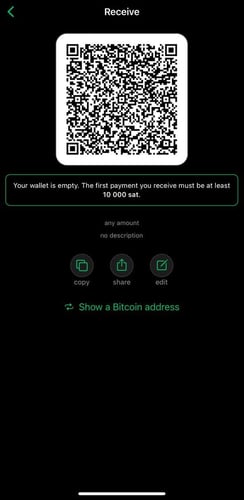
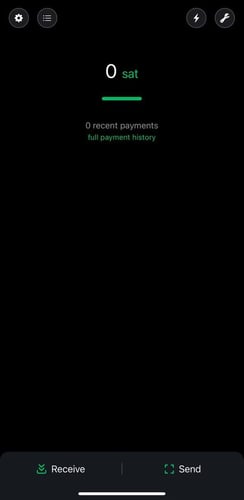
The wallet provides a detailed transaction history, allowing users to track their cryptocurrency activities. Phoenix prioritizes security by implementing advanced features such as multi-signature and two-factor authentication.
A notable feature of Phoenix is the ease of channel creation. This convenient functionality allows users to increase liquidity in the Lightning Network without complicated customization. The wallet also provides users with a detailed overview of their balances.
Phoenix allows users to send and receive both on-chain and off-chain (LN) payments via QR codes. This integration simplifies the payment process for users.
Phoenix uses the BIP39 seed phrase and follows the BIP84 derivation path. This ensures that users can recover their funds with compatible wallets in case of a forced channel closure or losing access to the device.
Platform compatibility: iOS, Android
Pros
- Cross-platform compatibility
- User-friendly interface
- Support for multiple cryptocurrencies
- Built-in exchange for currency exchange
- Secure wallet encryption.
- Ability to backup and restore
- Detailed transaction history
- Channel creation
- Transparent balance and channel overview
Cons
- Relatively new wallet
- Dependence of functionality on active Internet connection
- Possible exchange problems when mempool load is high
- Limited privacy options
- Cross-platform recovery is not yet fully available.
- Possible compatibility issues with some devices or systems
- Built-in exchange capabilities may be limited compared to specialized exchanges
Developer: ACINQ
Official website: https://phoenix.acinq.co/
Zap
Zap Wallet is a feature-rich, innovative platform designed to give users complete control over transactions on the Lightning Network. Developed by Jack Mallers, a well-known figure in the cryptocurrency space, this non-custodial wallet prioritizes security, ease of use, and advanced technology.
Features and Functionality
At its core, Zap Wallet is aimed at users who want to securely store, send, receive, and manage Lightning payments without the need for intermediaries. One of the notable features of the system is the creation of a unique private key for each Lightning Network user's payment address. This key is generated on the user's local device and never stored on the Zap server, further increasing the wallet's security.
Despite the extensive features, the wallet's user interface is characterized by simplicity, making it accessible even to beginners. This philosophy extends to the setup process: on the Zap website, users can enter their Lightning Network payment details to generate a private key.
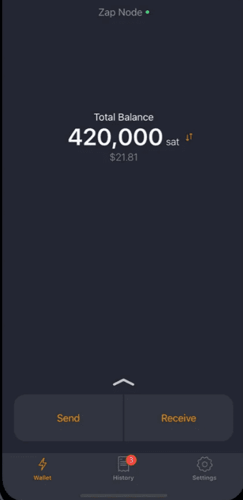
A distinctive feature of the Zap wallet is its compatibility with SegWit and Lightning Network transactions. In addition, the wallet integrates a "Strike" feature that allows users to purchase Bitcoin on the Lightning Network, simplifying the process of converting fiat to Bitcoin. In addition, Zap Wallet provides a debit card link to pay bills in Bitcoins, increasing its practicality for everyday use.
Security remains a major concern, and Zap Wallet addresses this by allowing users to connect to an existing Lightning node. In addition, the wallet supports creating and managing multiple wallets in one consolidated location.
In the future, it is planned to add the ability to simply launch a Lightning node and implement support for the Tor network.
Platform compatibility: Windows, macOS, Linux, iOS, Android
Pros
- Integration with Lightning Network
- User-friendly interface
- Private key generation
- Multi-platform support
- Integration with Strike
- Security and privacy
Cons
- Focused on advanced users
- Maintenance by a single developer
- Difficult to configure
- Lack of inbuilt node
- Network dependency
- Limited support for third-party developers
Developer: Jack Mullers
Official site: www.zaphq.io
Muun
Muun's non-custodial Bitcoin wallet combines security, usability, and advanced features. Muun offers a complete set of features designed for a wide range of users to efficiently manage, send and receive Bitcoin.
Features and Functionality
One of the key features of the wallet is the use of the multi-signature feature. With multi-signature authentication, Muun Wallet creates an additional layer of protection, effectively reducing vulnerability.
Muun Wallet utilizes hierarchical deterministic wallets (HD). This advanced mechanism allows users to generate multiple addresses based on a single initial seed phrase effortlessly. As a result, the process of backing up information in the wallet and the overall enhancement of user security is greatly simplified.
In the area of transaction management, Muun Wallet excels in that it allows for real-time monitoring. This feature allows users to stay up to date on all Bitcoin transactions and receive notifications about the receipt of funds promptly.
Muun Wallet is characterized by an intuitive interface suitable for both beginners and experienced users. A distinctive feature of Muun Wallet is its unified balance system, which allows users to monitor their balance on both the Bitcoin chain and the Lightning Network through a single integrated interface.
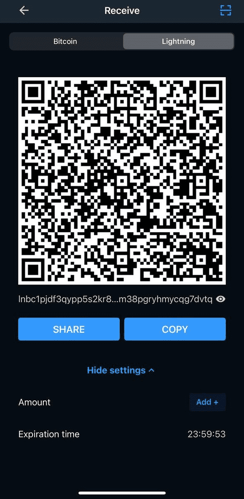
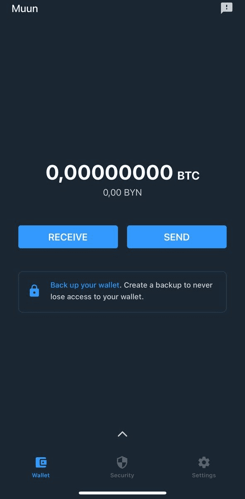
In addition, Muun Wallet provides optimal fee management by utilizing a mempool-based fee estimation system. Using dynamic mempool data, users can strategically optimize transaction fees by finding a balance between speed of confirmation and cost-effectiveness.
Muun Wallet utilizes a robust multi-signature method to enhance security. In scenarios involving possible loss or migration to another device, the wallet offers advanced recovery options, including a disaster recovery kit. This kit includes private keys and output descriptors, allowing for complex scenarios such as multisig, lightning, and taproot. Additionally, users can choose cold recovery code or multi-factor authentication as secure backup methods, increasing the security of wallet access.
If the phone is stolen, Muun Wallet provides the option to lock the wallet. This strategic feature secures funds until the user regains control of the wallet on a new device, effectively neutralizing potential threats associated with device compromise. Muun Wallet supports Submarine Swaps, which allows payments to be made via third parties when a direct Lightning Network link is unavailable. This innovation increases transaction agility and expands the range of options available.
Platform compatibility: iOS, Android
Pros
- Use of multi-signature
- Hierarchical deterministic (HD) wallets
- Real-time transaction monitoring
- User-friendly interface
- Single balance for on-chain transactions and Lightning Network
- Mempool-based fee estimation.
- Advanced recovery capabilities
- Submarine Swaps
Cons
- Limited support for cryptocurrencies (Bitcoin-centric)
- Requires responsible private key management
- Limited integration with other platforms
- Possible problems with using third-party services for Submarine swaps
- Lack of detailed transaction history for advanced users
Developer: Muun Wallet Inc.
Official website: www.muun.com
Zeus

Zeus Wallet is a unique application that deviates from the traditional concept of a separate cryptocurrency wallet. Instead, it functions as a mobile interface to manage Lightning nodes, specifically to conduct transactions on the Lightning Network. Unlike traditional wallets, Zeus does not operate as a standalone node but instead requires a connection to an existing Lightning node. This feature, while making it less suitable for beginners, is attractive to users who want to manage their nodes and interact more deeply with the Lightning Network.
Features and Functionality
Zeus is an application for managing Lightning nodes. It can be used for payments, channel management, and general control of Lightning nodes. This is especially attractive to users who are familiar with the intricacies of Lightning nodes and want hands-on control over the operation of their nodes.
Users need to configure the Lightning node to access it from within the Zeus application. This requires setting up the appropriate network configurations and ports and making the node accessible online. While the app simplifies the user interface for transaction management, setting up and maintaining the underlying infrastructure of the node can be challenging for novices.
Zeus Wallet adheres to the principle of non-custodial, meaning users retain full control over their private keys and funds. This aligns with the basic principles of a decentralized financial system (DeFi), where people have ownership and control over their assets. In addition, the wallet's open-source code promotes transparency by allowing the community to review and verify the code for security.
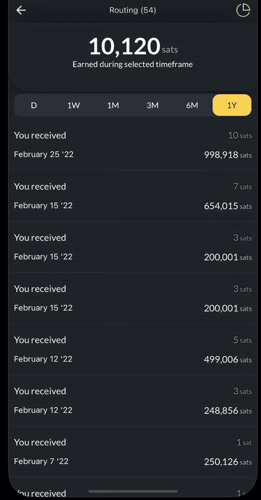
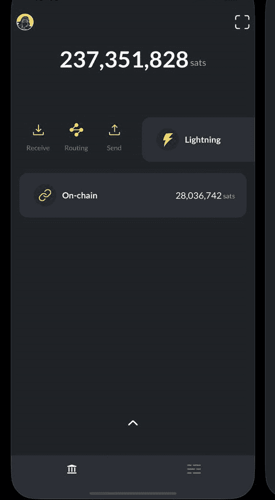
One of the advantages of Zeus Wallet is that it supports both the Lightning Network and the Bitcoin blockchain itself. Users can use both Lightning transactions for fast, low-commission payments and transactions on the Bitcoin chain when needed. This versatility expands the range of transactions that users can carry out through the app.
Zeus Wallet places great emphasis on privacy. This is achieved through integration with the Tor network, which enhances users' anonymity by routing their connections through Tor's decentralized, privacy-focused infrastructure. In addition, the app features a "Privacy Mode" that allows sending data to be hidden during transactions.
Zeus Wallet is primarily intended for power users, particularly those interested in or experienced with Lightning's nodes. This wallet is not intended for beginners, as the requirements to connect to an existing node and manage its operations can be technically complex and intimidating for users new to cryptocurrency and the Lightning Network.
Platform compatibility: iOS, Android, Desktop
Pros
- Ability to manage your Lightning nodes
- Focus on privacy through Tor integration and Privacy Mode
- Control over private keys
- Open source for transparency and community support
- Supports both Lightning Network and Bitcoin on-chain transactions
Cons
- Not beginner orientated, intended for advanced users
- A limited number of users due to the need to operate the node
- The complexity of Lightning node operation
- Requires an existing node for full operation
Developer: Atlas 21 Inc.
Official website: https://zeusln.app/
Bitcoin Beach Wallet (Blink)
Bitcoin Beach Wallet has become an important development in the unique cryptocurrency landscape of El Salvador, the first nation in the world to accept Bitcoin as a legal tender. Created in the city of El Zonte, the wallet aims to provide fast and cost-effective Bitcoin transfers, allowing Salvadorans to transact with ease starting in 2020. Unlike the official Chivo wallet, which is used exclusively by locals, the Bitcoin Beach Wallet is available worldwide.
Features and Functionality
One of the key features of Blink is its focus on beginners and learning. The wallet has a user-friendly interface and offers tutorials, making it an ideal choice for those new to the Bitcoin concept.
Blink supports traditional on-chain transactions by writing directly to the Bitcoin blockchain. Users enter the recipient's Bitcoin address and amount for seamless sending and receiving. For faster and more cost-effective transactions, Blink supports Lightning Network payments. The LNURL integration simplifies Lightning Network payments by generating unique transaction links. Within the Blink ecosystem, intra-group transactions enable fast direct payments between users. This feature extends payment capabilities by enabling instant transfers.
Blink uses a robust multi-segment storage system to protect funds. This approach involves using multiple private keys owned by trusted individuals in the Blink community. Most of the funds are stored in cold offline storage to strengthen the protection, which is a very secure method. Some Bitcoins remain in the hot wallet for efficient online transactions. Security is paramount to Blink, as evidenced by the use of advanced protocols such as two-factor authentication, SSL encryption, and regular security audits.
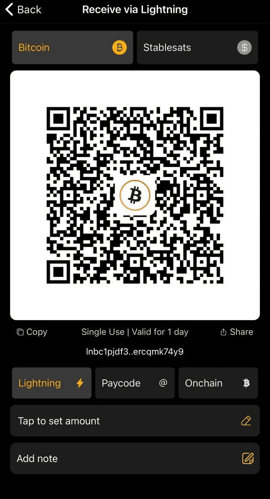
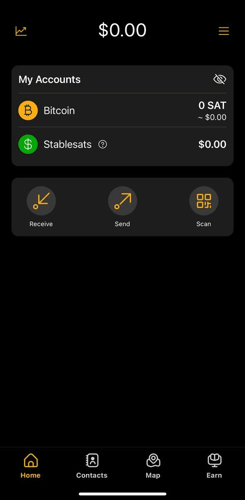
A unique feature of Blink is the integration of dollar accounts with Stablesats. This feature lets users maintain a stable dollar account value, offering a practical solution for short-term expenses. This stability-focused approach adds an extra layer of utility for those seeking to balance the benefits of Bitcoin and the stability of the traditional currency.
Beyond the core features, Blink offers the ability to choose the display currency, supporting over 30 different options. Users can make transactions within the wallet without fees as long as the sender and receiver use Blink. The app also includes a quiz to earn sats while learning Bitcoin, a transaction log to track payment history, a contact list, and a map of merchants that accept Bitcoin and Lightning payments.
Platform compatibility: iOS, Android
Pros
- Most funds are stored in cold storage for offline protection
- Efficient hot wallet for fast transactions
- Use of the most modern protocols
- Two-factor authentication
- SSL encryption for data protection
- Regular security audits
Cons
- Risks associated with using a hot wallet
- Limited capabilities
- Internet dependency
- Custodial nature
- Limited support for cryptocurrencies
Developer: Galoy
Official website: https://www.blink.sv/
Solutions and Extensions for Lightning Payments
Telegram Bot LNtxBot

LNtxBot is a development especially attractive for Telegram group administrators and users looking for a convenient means of exchanging Bitcoins and Satoshi. With its user-friendly interface and efficient operation, the bot simplifies the process of sending and receiving Bitcoin in chats and groups. It has gained considerable popularity as a means of expressing gratitude with satoshis and quickly transferring funds to other Telegram users.
A key feature of LNtxBot is its integration with the Lightning Network (LN). Using the Lightning Network, LNtxBot provides users with lightning-fast transactions and reduces fees.
While LNtxBot provides convenience and speedy transactions, it is important to understand its custodial nature. Users entrust their funds to the bot's server, which causes a certain dependence on the stability of the service. Therefore, using LNtxBot as the main HODL wallet is not recommended.
You can withdraw satoshis from the bot account to any other LN wallet or even to the main Bitcoin network. It can also link this bot wallet to mobile apps such as Bluewallet or Zeus.
Alby and Joule Extensions
The Alby extension allows users to interact with Bitcoin and Nostr apps. By connecting their Lightning wallets to this extension, users can easily manage their transactions right in the browser. This approach eliminates the need to scan QR codes, switch between apps, or search for credit card details, thereby simplifying the transaction process and increasing security.
The Alby extension facilitates the generation and management of multiple Nostr keys, allowing users to explore the new world of Nostr easily. This integration opens the door to new financial opportunities in a decentralized environment.
For podcasters and content creators, the Alby extension represents a unique way to monetize. By accepting direct payments from their audience, they can create a direct source of revenue.
Joule offers a set of functionality designed to integrate the Lightning Network into a web browser seamlessly. Joule's compatibility with Firefox, Opera, and Brave browsers allows Bolt-11 and WebLN payments to be made with a single click directly in the browser, minimizing transitions between user interfaces. The extension also allows you to monitor active channels, evaluate their bandwidth, and view transaction history. In addition, Joule synchronizes connection data across browsers.
The technical setup of Joule is simple and involves providing node specifications and macaroon files to establish a connection to the user's node. Making payments through Joule is initiated by clicking on the BOLT-11 link, which triggers secure credential decryption and payment processing in a browser environment.
Machankura 8333

Machankura is a solution for residents of several African countries, including Nigeria, Tanzania, South Africa, and Kenya, to send and receive Bitcoin without using smartphones or an internet connection. This innovative approach is based on the Machankura digital wallet, which works seamlessly with available mobile phones using a concise code transmitted in a text message. Operating on the Lightning Network, Machankura provides fast and cost-effective transactions, simplifying the process of sending and receiving Bitcoins.
New users can begin registration by dialing a specific country code, such as "9208333#" for Ghana or "4838333#" for Kenya. After successful registration, users are given access to a secondary menu that allows them to send and receive Bitcoin and view transaction history.
One of the distinguishing features of Machankura is the personalized Lightning addresses. These addresses are purposely made shorter and simpler than standard Lightning account addresses, making them easier to enter on basic phones with multiple text entries. By default, a user's phone number is used as the Lightning address in conjunction with Machankura's domain "@8333.mobi".
Machankura seamlessly integrates services such as Bitrefill and Azteco. This integration allows users to conveniently use Bitcoins for everyday purchases or redeem coupons directly from their Machankura wallet.
The variety of Lightning wallets on the market today is a testament to the significant growth and potential of the Lightning Network. These wallets cater to various preferences and needs, making Bitcoin transactions fast and inexpensive.
The advantages of these Lightning wallets are obvious: they provide instant and virtually failsafe transactions, thereby addressing one of the main criticisms of the Bitcoin baseline. They also increase privacy, promote scalability, and open up new opportunities for microtransactions and innovative applications. However, it is important to note that these wallets also have their characteristics. Some prioritize ease of use, others prioritize advanced features, and the choice between the two depends largely on individual preferences, needs, and comfort level with the technology.
As the Lightning Network evolves and spreads, we can expect to see further improvements and refinements to these wallets, contributing to the wider adoption of Bitcoin as a tool for everyday transactions. Whether you're a beginner or an enthusiast looking for a seamless transaction experience, the variety of Lightning wallets ensures that everyone will find the right option for them on this exciting journey to a more efficient and accessible financial future.
Personal VPN
Stay anonymous online with a dedicated IP and don't endanger your personal data.
Get $5.00/mo

